Hispanic Heritage Month
Why does it start the middle of the month? Plus 8 books to celebrate Hispanic authors and illustrators
When the elementary school sent home information posted on the Facebook page that I now have to check religiously to know glean what is going on at the school (ask me how I really feel) I saw that they posted about Hispanic Heritage Month! Because it was the middle of September I thought they got busy and missed the start of the month, which seemed rude. But no, as usual, I had some learning to do!
Hispanic Heritage Month was initially a week long and was signed into existence as a federally recognized event in 1968 by Lyndon B Johnson. The week of September 15th was chosen because Costa Rica, El Salvador, Guatemala, Honduras and Nicaragua celebrate their Independence Day on the 15th, Mexico on the 16th, and Chile on the 18th.

It was Congressman George E. Brown Jr. from California who first proposed the week in 1968. If Wikipedia is to be believed, Brown was a political figure who tirelessly fought for civil rights. As head of UCLA’s cooperative housing union, he invited Luther Goodwin to be his roommate, ending the campus housing segregation policy. When the draft for WWII was enacted, Brown was a conscientious objector. When Pearl Harbor resulted in internment camps for Japanese and Japanese Americans, Brown organized protests. When he was Mayor in Monterey Park, a Black family moved into his district. When they were met with racist threats, he personally spent the night at their house to offer protection, set an example, and send a message to his community. He also tirelessly fought for the passage of the Civil Rights Act and was there the day the bill was signed.
Brown marched with Cesar Chavez, the NFWA, and the AWOC during the Delano Grape Strike, and led a 60-minutes investigative team into Central America to expose the gross mistreatment of workers in facilities funded by US tax dollars.
In June of 1968, Brown and 19 cosponsors introduced House Joint Resolution 1299 which asked for the President to recognize the contributions and influence Hispanic people have in the founding of our nation. The Resolution easily passed and Johnson enacted the holiday immediately.
Twenty years later, in 1987, Esteban E. Torres (do you think their E’s stand for the same middle name…Yes, Edward, they do), also a Congressman From CA, who first proposed the week be extended to a full month. When Torres’ bill stalled it was Senator Paul Simon and 19 cosponsors (the symmetry is getting weird now, Edward) who pushed through S.2200 asking that a full month “be set aside to celebrate and acknowledge the numerous contributions” of Hispanic people.
When the Reagan administration signed in 1988 they maintained the 15th as the start date, recognizing the significance of that date to many Hispanic nations, and extended the celebration to last an entire month.
So now we know!
At our little local school, which is about 70 percent Hispanic, celebrations look very cute, which tracks when you imagine a lot of elementary-aged kids dressed up as Frida Khalo and Diego Rivera. They had a local Folklorico dance troupe and the High School’s Mariachi band come to perform. From the pictures posted on the above-mentioned FB page, it looked like a real treat.
FROM THE STAX
What are your favorite kids’ books that celebrate Hispanic heritage? Add to my list in the comments below.
MY PAPI HAS A MOTORCYCLE by Isabel Quintero Illustrated by Zeke Peña
Daisy knows that when her Papi comes home, she gets to go for a ride. Zooming through the neighborhood, Daisy notices all the places she loves, and the way the town is always changing.
This book captures the absolute joy of a motorcycle ride through familiar streets that are full of life. If you have ever been on the back of a motorcycle as a small child, you know the thrill. You notice more, and feel more connected to your surroundings, to the vehicle, to the driver. This book is an intimate portrait of connection through community. As a girl who has always loved to ride, and as a family who owns a motorcycle, we feel the wind against our chests when we read this one.
DESERT SONG by Laekan Zea Kemp Illustrated by Beatriz Gutierrez Hernandez
Desert Song begins with the sounds of a summer night, with a family on a front porch picking up their respective instruments and starting to play. What starts as a song turns into a commune with nature, with land, with the ancestors who came before us, and the power of story, song, and dance keeping us all connected.
When the cicadas start singing, or the warm blanket of a Texas summer night sits hot against our skin and the night sky stretches out forever, this book sings to that song. I love finding and supporting local authors, especially ones who can so powerfully capture the feeling of a hot summer porch sitting kind of night.
*I received this book from Holiday House, all thoughts and opinions are my own*
ABUELITA’S GIFT by Mariana Ríos Ramírez Illustrated by Sara Palacios
Julieta is very excited for Abuelita to visit on Dia de Muertos, and she wants to make sure she puts the perfect gift on the ofrenda to make her Abuelita smile. After a few failed attempts, Julieta realizes the one thing that really will be special is the thing she has not been able to do for a while.
Perfect for celebrating Hispanic Heritage Month, and for Dia de Muertos! This book makes me CRY EVERY TIME I READ IT. I love how it teaches about honoring our ancestors, and how it opens up a conversation for remembering our elders and the things that were special that we shared with the people who are now gone. After we read this book we watched COCO, so I could CRY SOME MORE.
ISLANDBORN by Junot Diaz Illustrated by Leo Espinosa
Lola’s school assignment is to write about where she comes from, but she doesn’t remember her home. So she asks her relatives and community members, gathering their stories to create her masterpiece. Retellings of the sweet mangos, the music flooding the streets, the beautiful beaches, the terrible storms, and yes, even the monsters.
SPEAKING OF CRYING. I’ve reviewed Islandborn before in my first-ever-newsletter-ever but I’d be remiss if it wasn’t on this list. I dare you to read this book and not shed a tear. The gorgeous illustrations bring the magic of imagination and memory to life, and the writing includes a poignant nod to the Mirabel Sisters who stood against Trujillo’s reign to fight for the liberation of the Dominican Republic, spreading the message to stand up and face the monsters.
THE LAST SLICE by Melissa Seron Richardson Illustrated by Monica Arnaldo
Marta loves Three Kings Day (Jan 6th, celebrating when the 3 kings first saw baby Jesus) and she LOVES la Rosca de Reyes (Kings Cake) but she doesn’t love that she is old enough for her own slice, because that means she might get the baby!
Another book about facing your fears, although this one is a lot more silly since what Marta fears isn’t a dictator, but a little plastic baby Jesus. If y’all don’t know about King Cake, get yourself down to Lousiana anytime between Three Kings Day and Fat Tuesday and EAT SOME! I was introduced to the tradition by my ex, and though we didn’t last, my love of King Cake sure did. And don’t worry if you chomp on the baby, just like Marta learns, it is way more fun (and delicious) than it is scary.
LA PRINCESA AND THE PEA by Susan Middleton Elya Illustrated by Juana Martinez-Neal
El príncipe knows he has found his perfect match, now to convince his ever-skeptical mother. An adorable twist on a fairy tale classic, with a peppering of Spanish throughout, this one is a delight to read and discover.
We love the illustrations telling their own sneaky story, and how clever and cute the workaround is for how the Queen is fooled.
THE ROOSTER WHO WOULD NOT BE QUIET! by Carmen Agra Deedy Illustrated by Eugene Yelchin
The noisy city of La Paz needs a little quiet, but when the mayor, Don Pepe, takes the ordinances a little too far, the city forgets their heart. Until one day a plucky rooster who refuses to be silent enters the town and sings despite every desperate threat the mayor tries to silence his voice.
A story about how power is used to silence, oppress, and control and how a single voice can bring change when everyone has forgotten how to sing. If only we could all be as brave as the plucky little rooster.
WHERE ARE YOU FROM by Yamile Saied Méndez Illustrated by Jamie Kim
When a little girl is asked where she is “from” and doesn’t know how to respond, she asks her abuelo for advice. But instead of giving the girl the answer she may have expected, she gifts her a poem.
Recognizing that identity doesn’t stem from a place on a map, but a place in our history and our hearts, Where Are You From will help children and adults realize that we are all from the stories that created us, the people who loved us, and the experiences we have had. Unifying while still empowering the individual, this book opens doors to conversations about the many places that make up the many individuals that make up the world we live in.
CHAT WITH ME
I may have researched the creation of Hispanic Heritage Month, but I didn’t research who I should be celebrating! I want to look for kids’ books about Cesar Chavez, Ellen Ochoa, Dolores Huerta, Selena, Sonia Sotomayor, and Frida Khalo, but I know this list is too short!
So, who are your favorite people to celebrate during Hispanic Heritage Month? How can we increase recognition of unique Hispanic nations? Whose voices and work should we be lifting up, learning about, and paying homage to? Let’s help each other learn to be better citizens by connecting one another with knowledge and resources!
Thanks, as always, for being here. I’ll see you real soon and happy reading!




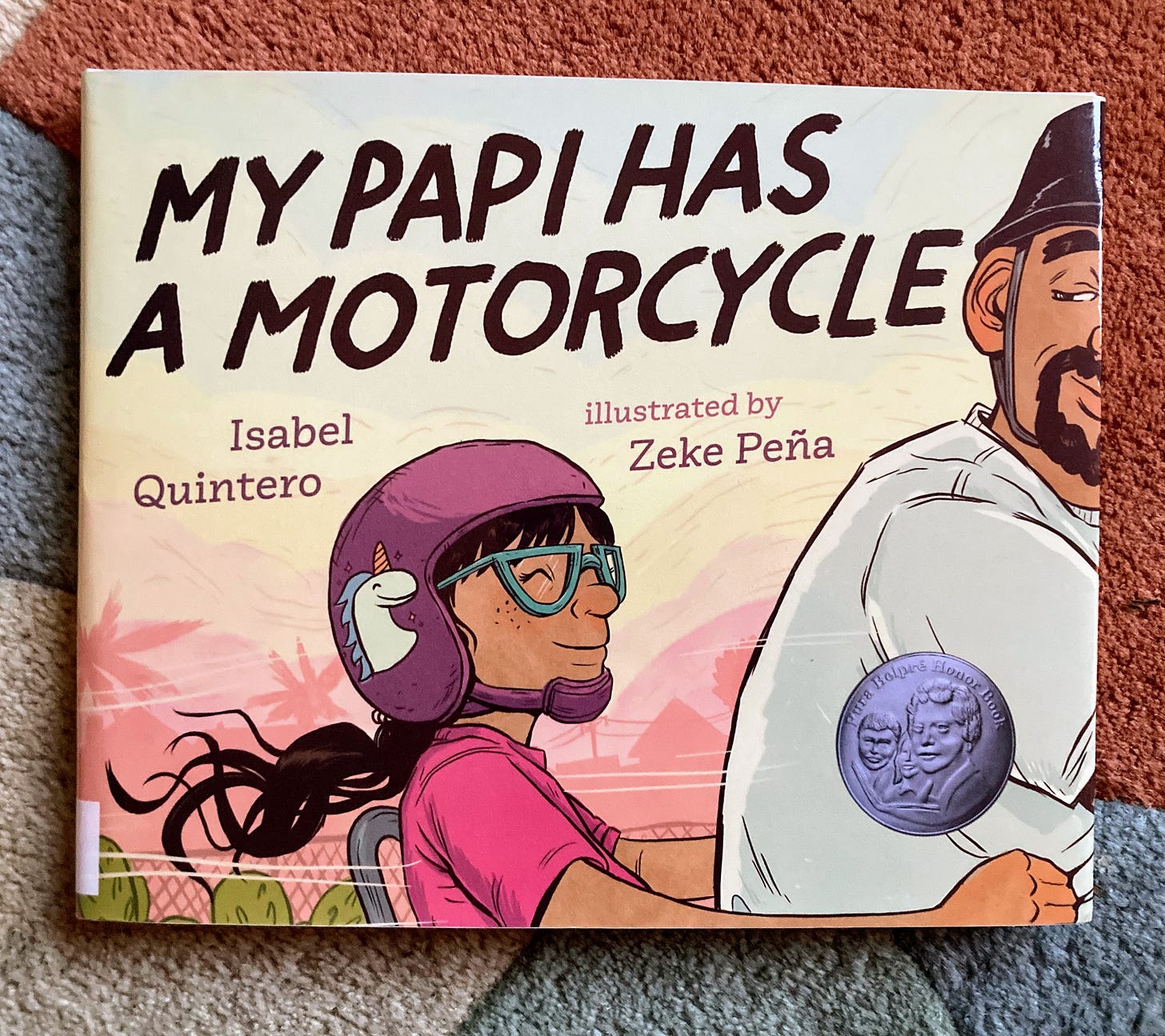
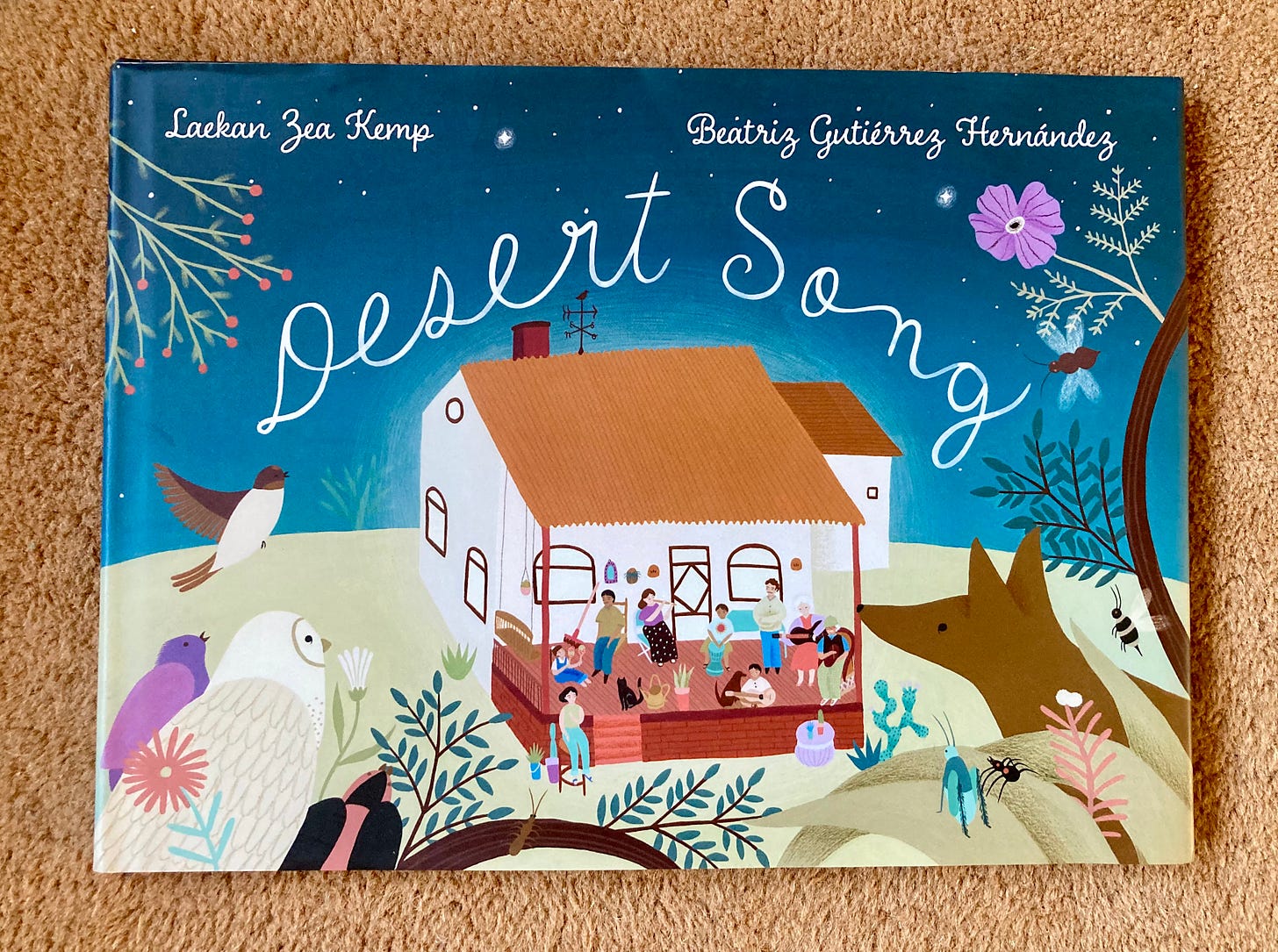
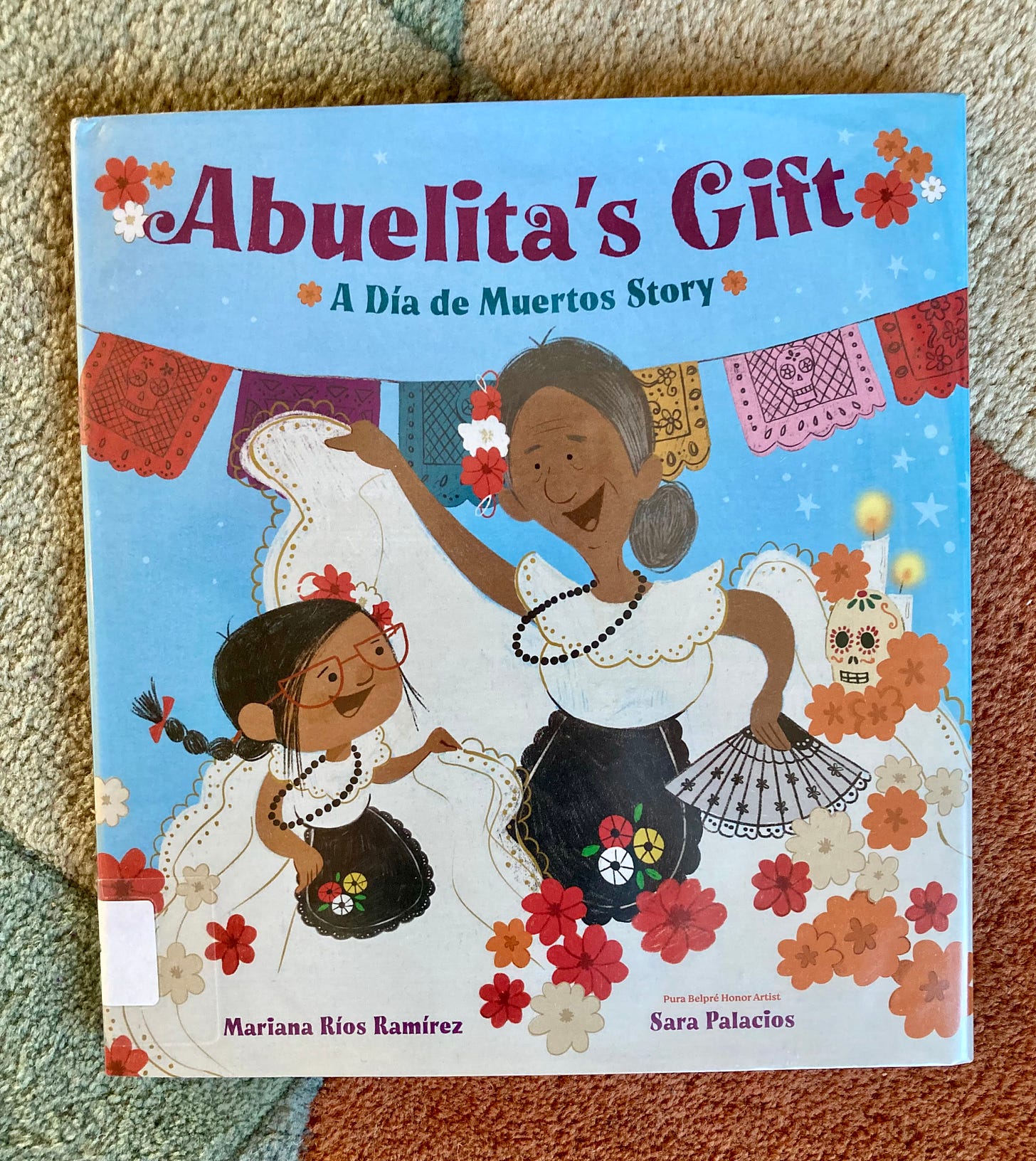
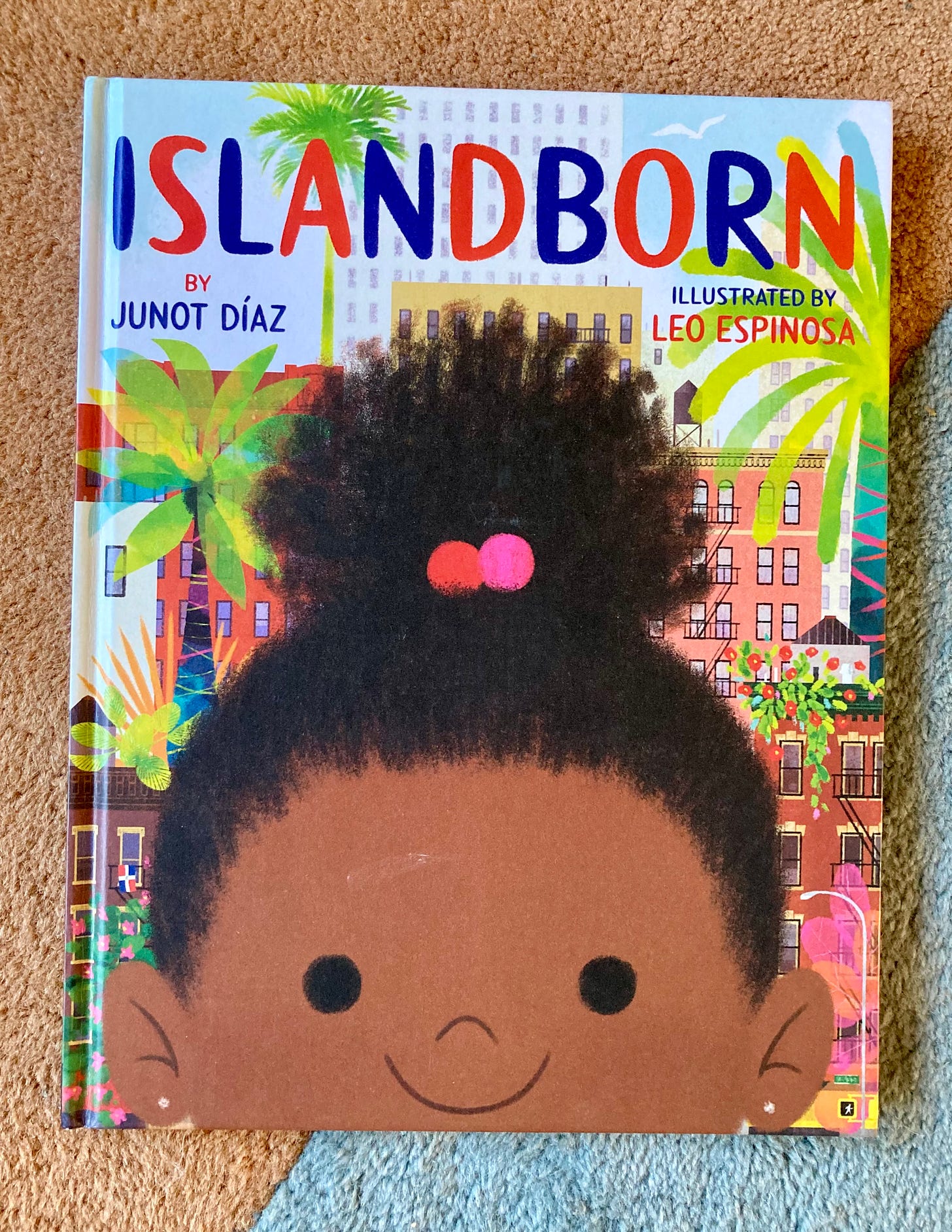
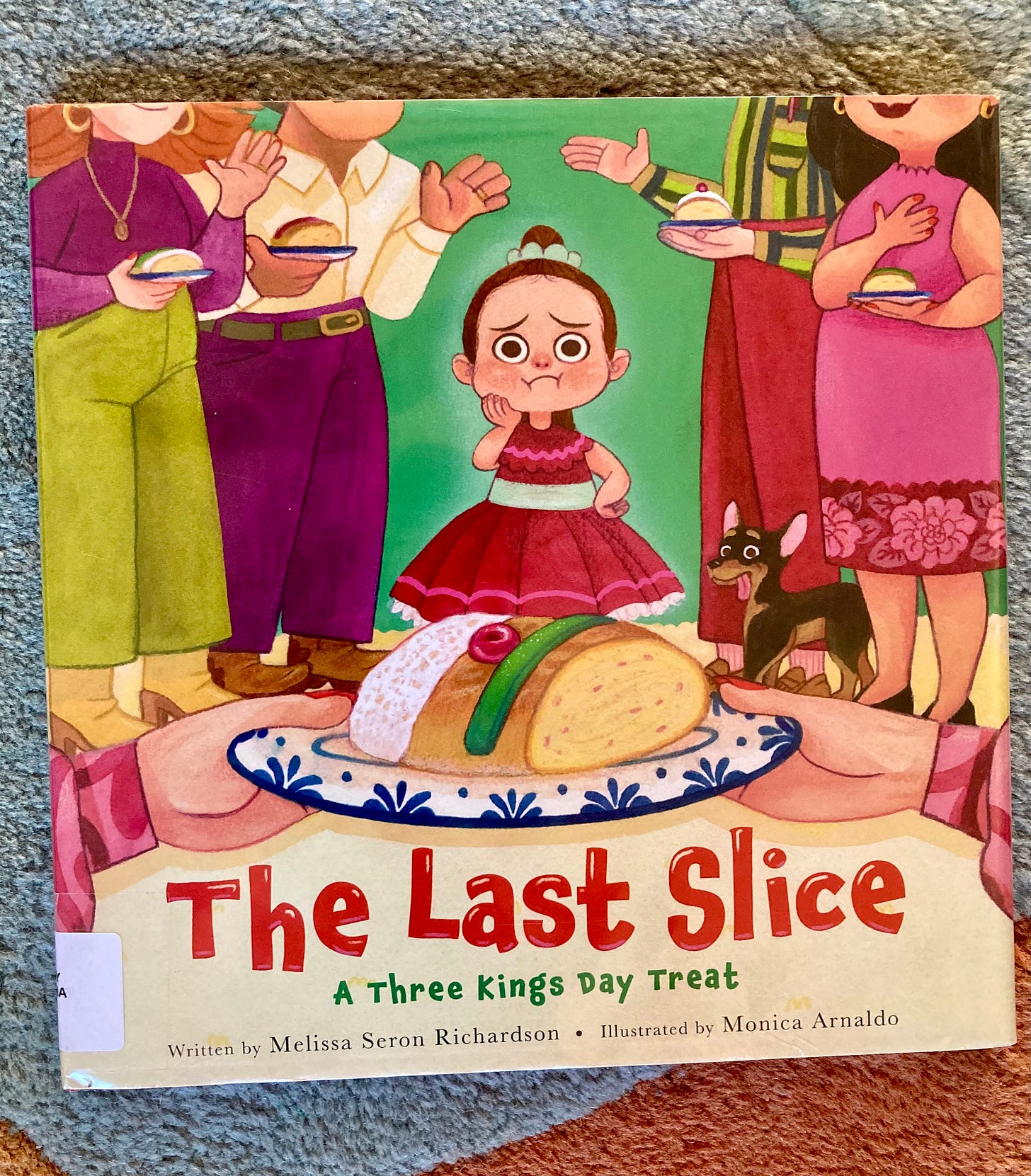
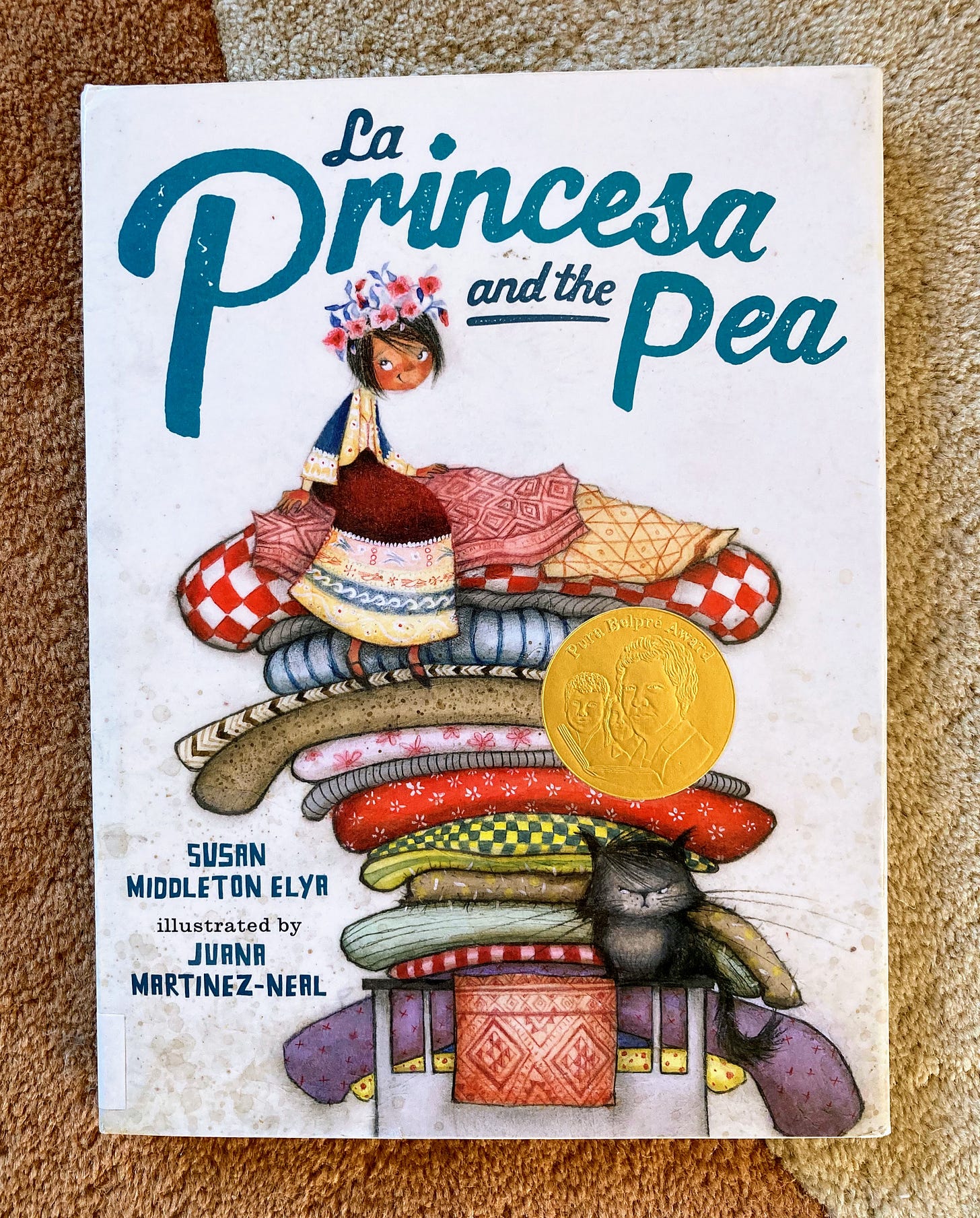
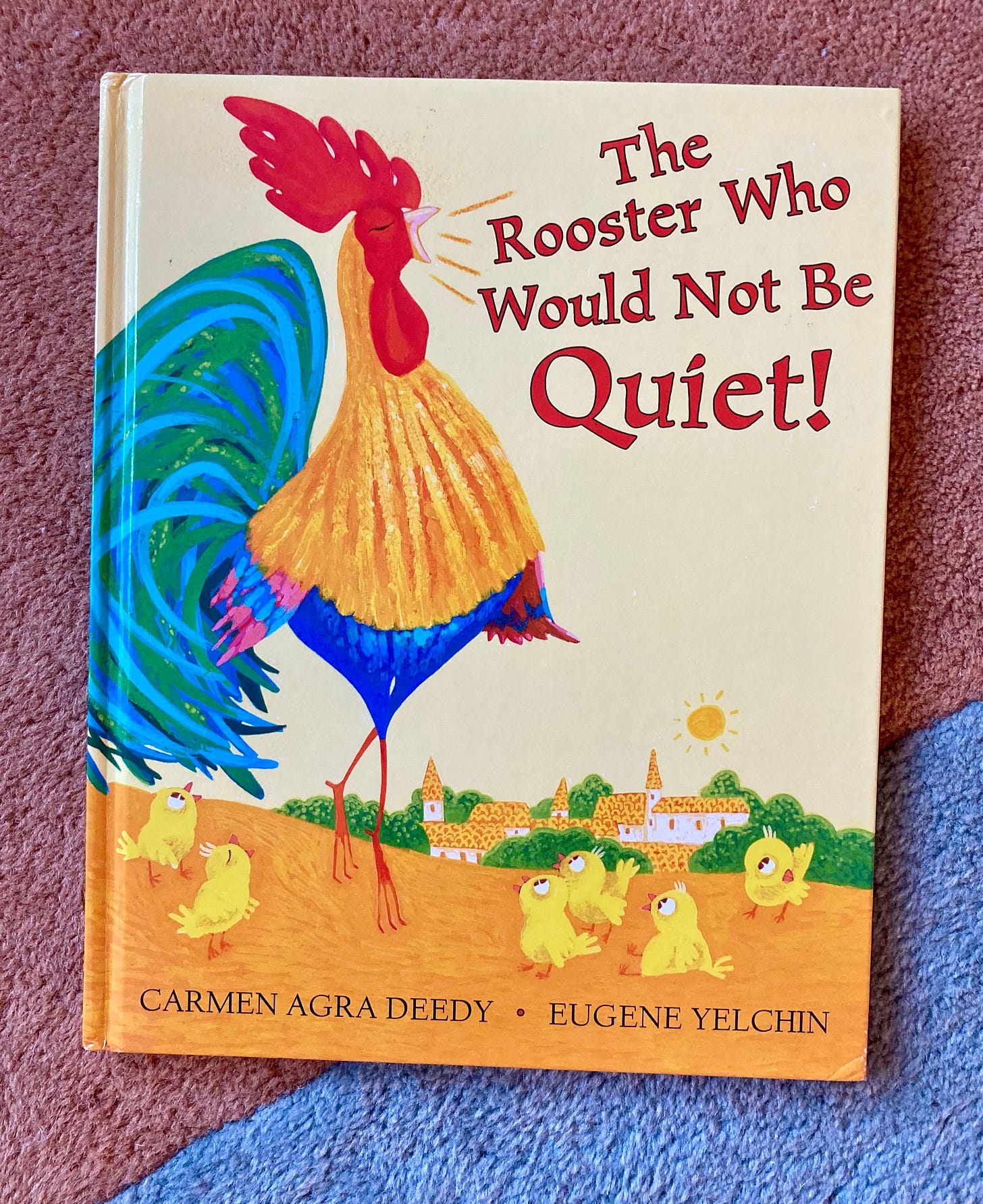

The Rooster Who Would Not Be Quiet is such an amazing and important read!
It is a little dated and not quite what you're looking for, but this list may help: https://www.cybils.com/2023/03/backlist-book-list-latinx-voices.html